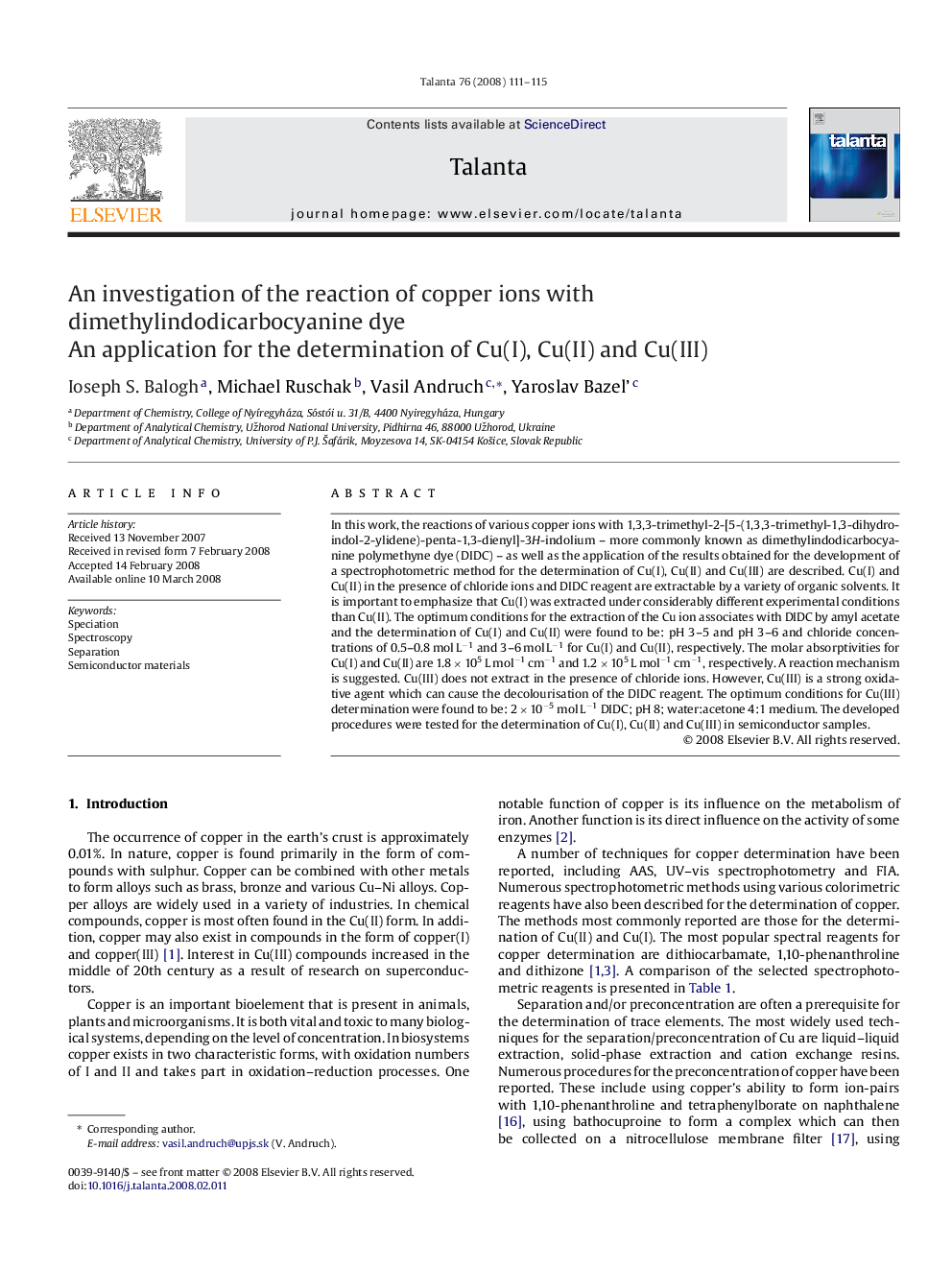| Article ID | Journal | Published Year | Pages | File Type |
|---|---|---|---|---|
| 1243970 | Talanta | 2008 | 5 Pages |
In this work, the reactions of various copper ions with 1,3,3-trimethyl-2-[5-(1,3,3-trimethyl-1,3-dihydro-indol-2-ylidene)-penta-1,3-dienyl]-3H-indolium – more commonly known as dimethylindodicarbocyanine polymethyne dye (DIDC) – as well as the application of the results obtained for the development of a spectrophotometric method for the determination of Cu(I), Cu(II) and Cu(III) are described. Cu(I) and Cu(II) in the presence of chloride ions and DIDC reagent are extractable by a variety of organic solvents. It is important to emphasize that Cu(I) was extracted under considerably different experimental conditions than Cu(II). The optimum conditions for the extraction of the Cu ion associates with DIDC by amyl acetate and the determination of Cu(I) and Cu(II) were found to be: pH 3–5 and pH 3–6 and chloride concentrations of 0.5–0.8 mol L−1 and 3–6 mol L−1 for Cu(I) and Cu(II), respectively. The molar absorptivities for Cu(I) and Cu(II) are 1.8 × 105 L mol−1 cm−1 and 1.2 × 105 L mol−1 cm−1, respectively. A reaction mechanism is suggested. Cu(III) does not extract in the presence of chloride ions. However, Cu(III) is a strong oxidative agent which can cause the decolourisation of the DIDC reagent. The optimum conditions for Cu(III) determination were found to be: 2 × 10−5 mol L−1 DIDC; pH 8; water:acetone 4:1 medium. The developed procedures were tested for the determination of Cu(I), Cu(II) and Cu(III) in semiconductor samples.
